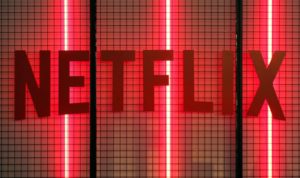
Despite increased attention and revenue, the music streaming industry remains largely unregulated.
Artists on average are paid less than one-tenth of a cent per stream on Spotify. Although Spotify tripled in value during the COVID-19 pandemic, it did not increase payouts to artists.
Despite general agreement among the public that artists should make more from streaming, many stakeholders disagree on the best source of this funding. Spotify recently required users to pay more, yet many artists argue that the problem lies with the record labels and streaming services that pocket the money. Although legislators have made progress in reforming the music streaming industry in the United States and abroad, scholars have called for increased regulation to ensure a more equitable future for artists.
Record labels and streaming platforms are the two major entities that separate an artist from directly profiting from the streaming of their music.
Artists sign contracts with record labels that contribute financially to the production of a song. In return, artists give the label replication, distribution, and performance rights in the recording. Record labels then work with streaming platforms to distribute music to the public.
Streaming platforms such as Spotify do not pay artists who are featured on its platform directly. Instead, once Spotify streams a recording, it pays part of its sales to the intermediaries that each take a cut before paying the artists.
The most important part of the music streaming chain—how money moves from the intermediaries to artists—is also part of the distribution process that is the least transparent, one expert explains.
Record labels pay artists under the terms of their contracts, but they are subject to non-disclosure agreements (NDAs). For example, music star Lady Gaga’s contract with her record label leaked, revealing that Lady Gaga earned nothing from her licenses.
This issue is a common occurrence among large and small artists alike. As a result, lawmakers have started to make various efforts to reform streaming.
In 2021, the United Kingdom (UK) launched an investigation into the streaming industry. A Parliamentary committee issued a 120-page report offering recommendations for reform. Although not legislation, the report marked the first time that lawmakers have taken such an in-depth look at who is, and is not, benefitting from streaming.
In its report, the Parliamentary committee recommended that the government introduce a right to equitable remuneration, which would increase royalty payment to artists.
The committee also recommended that a UK agency study the economic impact of the “Big Three” record labels, Universal Music Group, Sony Music Entertainment, and Warner Music Group. According to the report, these record labels “currently dominate the music industry”, causing concerns about the major labels’ ability to “benefit at the expense of independent labels.”
Then in 2022, France’s recording industry signed an agreement guaranteeing all artists would be paid a minimum amount, proportionate to their quantity of streams. In turn, France became the first major market to set minimum streaming royalty rates into law.
That same year, U.S. Representative Rashida Tlaib (D-Mich.) introduced a resolution stating it is the “duty of the federal government to establish a new royalty program” to pay artists on streaming platforms. The resolution noted that Spotify earned over $10 trillion in revenue in 2020 despite meager artist payouts.
Representative Tlaib’s effort, however, went nowhere.
Despite some progress toward more equitable compensation for artists, experts have called for increased regulation in the digital streaming industry.
To address concerns about the prevalence of NDAs between artists and record labels, Meredith Filak Rose of Public Knowledge proposed that the Federal Trade Commission conduct an information-gathering study under Section 6(b) of the Federal Trade Commission Act, a provision that allows the Commission to investigate an entity’s business practices. According to Rose, such an investigation could help lawmakers understand the impact of NDA agreements on artists so that they can then legislate accordingly.
Rose further suggested that the U.S. Department of Justice conduct a companion review to evaluate the market effects of the Big Three’s control of the music market.
In addition, experts have advocated greater transparency in Spotify’s algorithms. Spotify’s “Discovery” tool allows artists and labels to select songs to prioritize in Spotify’s algorithmic recommendations in return for a lower royalty rate on those streams. Scholars argue that these practices discriminate against smaller labels and artists who cannot afford to take lower royalties.
Lawmakers have also alleged that the Discovery tool may cause artists and labels to feel compelled to accept lower royalties. They have requested information from Spotify to understand fully the tool’s impact on artist payouts.
Furthermore, some commenters suggest that lawmakers require a minimum number of non-Spotify-curated playlists to be featured on a user’s Search Page. Spotify curates playlists that are featured on the Search Page, and researchers found that having a song on Spotify’s “Today’s Top Hits” playlist raised streams by almost 20 million. In turn, including non-Spotify playlists on the Search Page could help boost smaller artists, these experts argue.
Finally, experts have explored a shift from a pro-rata to a user-centric payment system. Most streaming services, including Spotify, use a pro-rata system in which all subscription money is pooled into a single pot, and then a percentage of it is distributed to artists proportionate to their number of streams. For example, if Beyoncé gets five percent of the total streams in a month, Beyoncé’s label will get five percent of the total money paid to all content providers that month.
Under a user-centric system, subscription money is distributed proportionate to the artists’ songs that each user streams. If a user only listens to Beyoncé, their fees will go to Beyoncé’s label only. Experts suggest a user-centric system is more fair to niche artists and to consumers who can directly support their favorite artists. Other experts, however, argue that the pro-rata system is more sustainable long-term.
Lawmakers have achieved some progress in creating a more equitable streaming industry. But many scholars continue to advocate more robust regulation in the industry to ensure fair payout for artists’ works.



